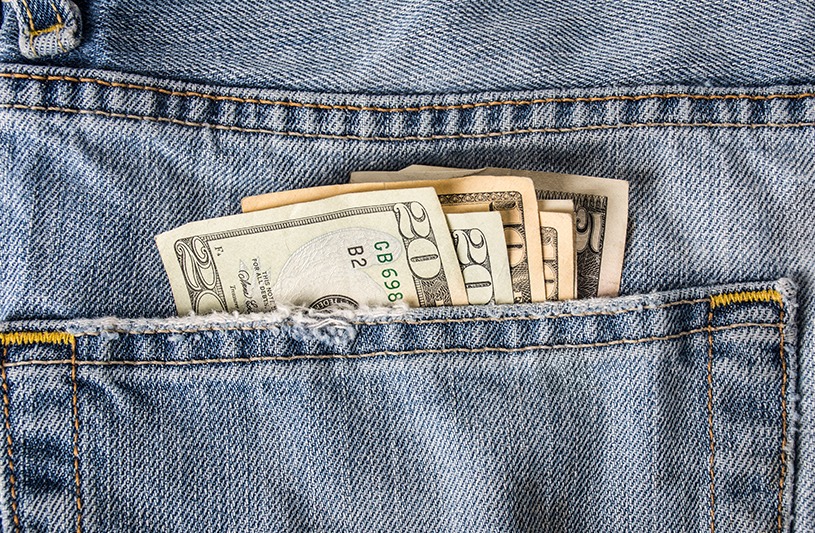More and more retailers are rethinking loyalty and launching their own premium loyalty programs.
Just about every retailer has a free loyalty program, but do these programs really develop loyalty with consumers?
They sign up, receive a card, make purchases to rack up points, and then redeem those points towards future purchases or rewards.
They’re all pretty much the same because these free programs have traditionally needed to appeal to the most people possible. There’s little differentiation and personalization and that’s why most households belong to 29 loyalty programs on average, yet are only active in 12 of them.
If a consumer has a loyalty card for every retailer in your space, is that really loyalty?
We know that consumer shopping habits have changed, but sadly most loyalty programs have not. What would a program that was different and better and actually built real loyalty between brands and customers look like?
It would look like a premium loyalty program, and they actually exist. Not only do they exist, but they are already completely changing the way we think about customer loyalty.
The premium loyalty movement is happening and here’s what you need to know to get onboard, too.
What is a Premium Loyalty Program?
When you think of the word “premium”, what comes to mind?
A premium might be some type of prize or incentive offered by a business. It could be a gift or bonus. In the insurance world, it’s the installment amount paid by the policyholder for coverage.
As an adjective, it’s something of exceptional quality or greater value than others of its kind.
In the loyalty space, a premium loyalty program is simply a program where members pay a recurring fee for benefits they can use right away.
A premium loyalty program gives the consumer the benefits upfront, rather than transactions first and rewards later.
Find out more about premium loyalty programs.
How Do Premium Loyalty Programs Work?
Traditional programs require members to spend over time for rewards that come later. These traditional programs simply train customers to wait for discounts and coupons. They don’t develop loyalty.
Premium loyalty programs work the opposite way.
In a premium loyalty program, members pay a recurring fee to stay in the program in exchange for valuable brand and product specific benefits that they can use anytime. This means that members can engage with the program 24 hours a day, 365 days a year.
The retailer enjoys more engagement, more order frequency, and higher AOV in addition to collecting valuable data about their best customers.
The membership fee also becomes a recurring revenue stream which the retailer can use to fund the benefits. With this model, the loyalty program goes from margin killer to ancillary revenue source.
The customer enjoys the best of the brand, all of the time, because data collected on shopping habits and personal interests can all be used to personalize the experience of each member, and the membership fees can offset better benefits.

What Are Some of the Member Benefits Associated with a Premium Loyalty Program?
Premium loyalty program benefits are much more valuable than benefits in free programs. They must be, or else members won’t stick around.
By nature, premium loyalty benefits should be customized for each brand because each brand has a different audience, but there are a few benefits that are pretty common.
Benefits like flat rate discounts that can be used at any time, as well as free 2-day shipping and returns with every purchase are typical of premium.
Premium loyalty program also typically offer non-monetary benefits such as experiences or events, high touch services like dedicated phone support or concierge services, and premium content for members only such as streaming video, music, and eBooks.
Which Retailers Have Premium Loyalty Programs Today?
More retailers are rethinking loyalty and traditional points programs.
You might be surprised that one of the world’s largest retailers was a pioneer in the premium loyalty movement. Chances are you might even belong to this program.
That’s right, Amazon Prime is the best premium loyalty program in history.
Nearly half of all U.S. households belong to Prime and Prime members spend on average five times more per year than non-members.
Amazon isn’t the only retailer in the premium loyalty revolution, though.
Restoration Hardware, GameStop, Barnes & Noble, Best Buy, and others have also jumped onboard. With membership models on the rise, it has been proven that consumers are willing to pay to get the best benefits and content.
Is a Premium Loyalty Program Better Than a Free Program?
If you are looking for as wide of an audience as possible, a traditional “one size fits all” free program is an appropriate choice.
However, if you aspire to identify and build relationships with your brand’s most valuable customers, a premium loyalty program that gives them valuable benefits and rewards to nurture continued loyalty is the better choice.
Find out what makes customers willing to pay for a loyalty program.
Premium loyalty programs earn a faster ROI due to the recurring membership fee upfront, do the best job of attracting committed, qualified members, offer more attractive and generous rewards, and are used to obtain quality data about your best customers.
Click here to take an in-depth look at free versus fee based loyalty programs.
See how a free loyalty program can be enhanced by adding a premium loyalty tier.

What Does It Take To Build And Maintain A Premium Loyalty Program?
There is no denying it.
Building out and running a successful premium loyalty program (or any loyalty program for that matter) is very complex and requires a massive amount of resources.
Aside from the technical aspect of building the program and worrying about security and PCI compliance, there are also a lot of other things to consider. Since a loyalty program is an extension of your brand, you will need a creative team to ensure every customer touch point is on-brand, and a marketing team to help acquire members.
If your program benefits require exclusive member content, you will need a team of content creators to produce articles and video.
Customer service is also a huge consideration. Once marketing has helped onboard members, you’ll need to make sure that you have a team in place to provide the best, branded customer service to make sure members stay happy and committed to you.
It’s important to continually add to and improve your program as well, just like Amazon does with Prime. To do this, you need product managers and developers to be able to interpret your data and make the necessary technical improvements.
Other back office areas such as operations and accounting also need to be considered to run a premium loyalty program.
It takes a lot of people in different departments to make it work.
That’s why we recommend partnering with a company that specializes in building and running premium loyalty programs, so you can focus on running your business and not tying up your own valuable resources (or having to hire multiple teams).
How Much Does It Cost To Build A Premium Loyalty Program?
It depends on who builds it.
Are you going to attempt to build it yourself? How much does it cost to hire an IT team, product team, marketing team, creative team, customer service team, accounting team, and operations managers specifically to run the program?
Brands that do not have the experience or massive bandwidth that it takes to build a loyalty program are wise to outsource this work.
The problem with outsourcing a traditional loyalty program is the cost association with it.
There are a lot of Software as a Service (SaaS) loyalty programs out there. Under that model, you would typically have to pay a large initial fee plus annual fees. A million-dollar upfront implementation fee is not unheard of as well as monthly fees depending on the number of stores a retailer has.
Once you do get the software up and running, you would normally need to upgrade to a higher service plan (at a higher cost) for any type of ongoing support.
At Clarus, we don’t charge our retailer partners any fees to build a branded, white label premium loyalty program for them. We call this platform with a service (PwaS). Our partners not only get our loyalty platform, they get us along with it.
We work closely with our partners from the start to learn about their business, customers, and in order to build a program with benefits that make the most sense based on that. We need to make sure the program is successful, because if it isn’t no one wins.
Simply put, we only make money when our retail partners make money, so we are involved every step of the way, from brainstorming to implementation to ongoing support and strategy.

Is a Premium Loyalty Program the Program for You?
It all comes down to the company you want to keep and how you look at loyalty.
If you view loyalty as a tactic, then premium might not be for you. If you view loyalty as a long term strategy, then you need a loyalty program that supports that.
By charging a membership fee, you’ll get the most loyal customers and be able to offer them the best, most personalized experiences of your brand.
With premium loyalty,
- A brand’s most engaged & valuable customers pay a fee for access to exclusive perks.
- Brands choose the exact benefits they want to offer.
- Customers can engage with the program 24/7/365.
- Brands get important data on their best customers.
- Customers are delighted and brands enjoy increased engagement, order frequency, and AOV.
Learn if premium loyalty is right for your company here.
Consumer loyalty is changing. Isn’t it time to change your loyalty program?
If you haven’t thought about a premium loyalty program yet, now is the time to get moving.
If you would like to learn more about how to build a premium loyalty program for your brand, please get in touch with us here.